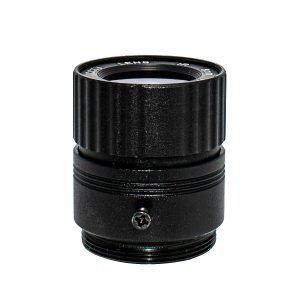How Are Industrial Lenses Classified? How Is It Different From Ordinary Lenses?
Industrial lenses are widely used in the industrial field and are one of the common lens types. Different types of industrial lenses can be selected according to different needs and application scenarios.
How to classify industrial lenses?
Industrial lenses can be divided into different types according to different classification standards. Common classification methods are as follows:
Classification based on lens structure. According to the lens structure of the lens, industrial lenses can be divided into single lenses (such as convex lenses, concave lenses), compound lenses (such as biconvex lenses, biconcave lenses), composite lens groups, etc.
Classified according to focal length. Classified according to the focal length of the lens, industrial lenses include wide-angle lenses, standard lenses, telephoto lenses, etc.
Classified according to application areas. Classified according to the application fields of the lens, industrial lenses can be divided into machine vision lenses, industrial measurement lenses, medical imaging lenses, microscope lenses, etc.
Classified according to interface type. Classified according to the interface type of the lens, industrial lenses include C-mount, CS-mount, F-mount, M12-mount and other types.
Classification based on optical parameters. Lenses are classified according to their optical parameters, including focal length, aperture, field of view, distortion, astigmatism, resolution, etc.

The industrial lens
What is the difference between industrial lenses and general lenses?
With the changes in demand and the advancement of technology, the differences in performance characteristics between industrial lenses and general consumer lenses are gradually disappearing, and some industrial lenses and general lenses can also be used interchangeably.
Generally speaking, the differences between industrial lenses and general lenses are as follows:
Different optical properties
Compared with general lenses, industrial lenses have higher requirements for image quality and accuracy. They generally have low distortion, chromatic aberration and light attenuation, ensuring image accuracy and reliability. General lenses may have certain compromises on some parameters, mainly pursuing better artistic effects and user experience.
Different design purposes
Industrial lenses are mainly designed for industrial applications such as machine vision, automation control, measurement and analysis. They are designed to meet high accuracy, high resolution and stability requirements. General lenses are mainly designed for photography, film and television applications, and pay more attention to picture performance and artistic effects.
Different focusing methods
General lenses usually have an autofocus function, which can automatically adjust the focus according to the scene and the subject. Industrial lenses usually use manual focus, and users need to manually adjust the focal length and focus to adapt to different industrial application scenarios and needs.
Differences in durability and adaptability
Industrial lenses need to withstand harsh industrial environments, such as high and low temperatures, humidity and vibration, so they usually need to have strong durability and adaptability. In comparison, general lenses are designed to be lightweight, portable and easy to carry, making them easy to use in normal environments.

